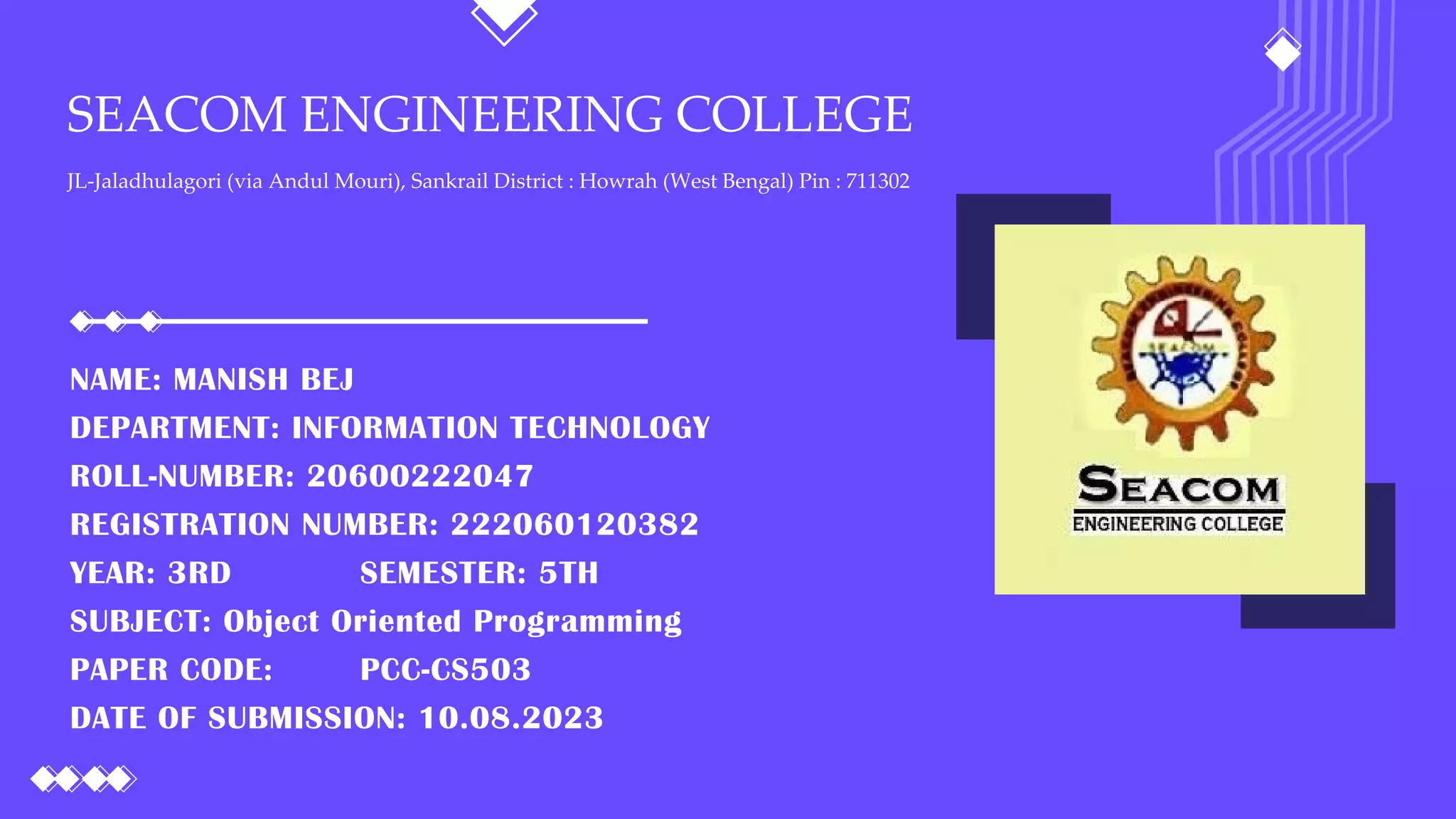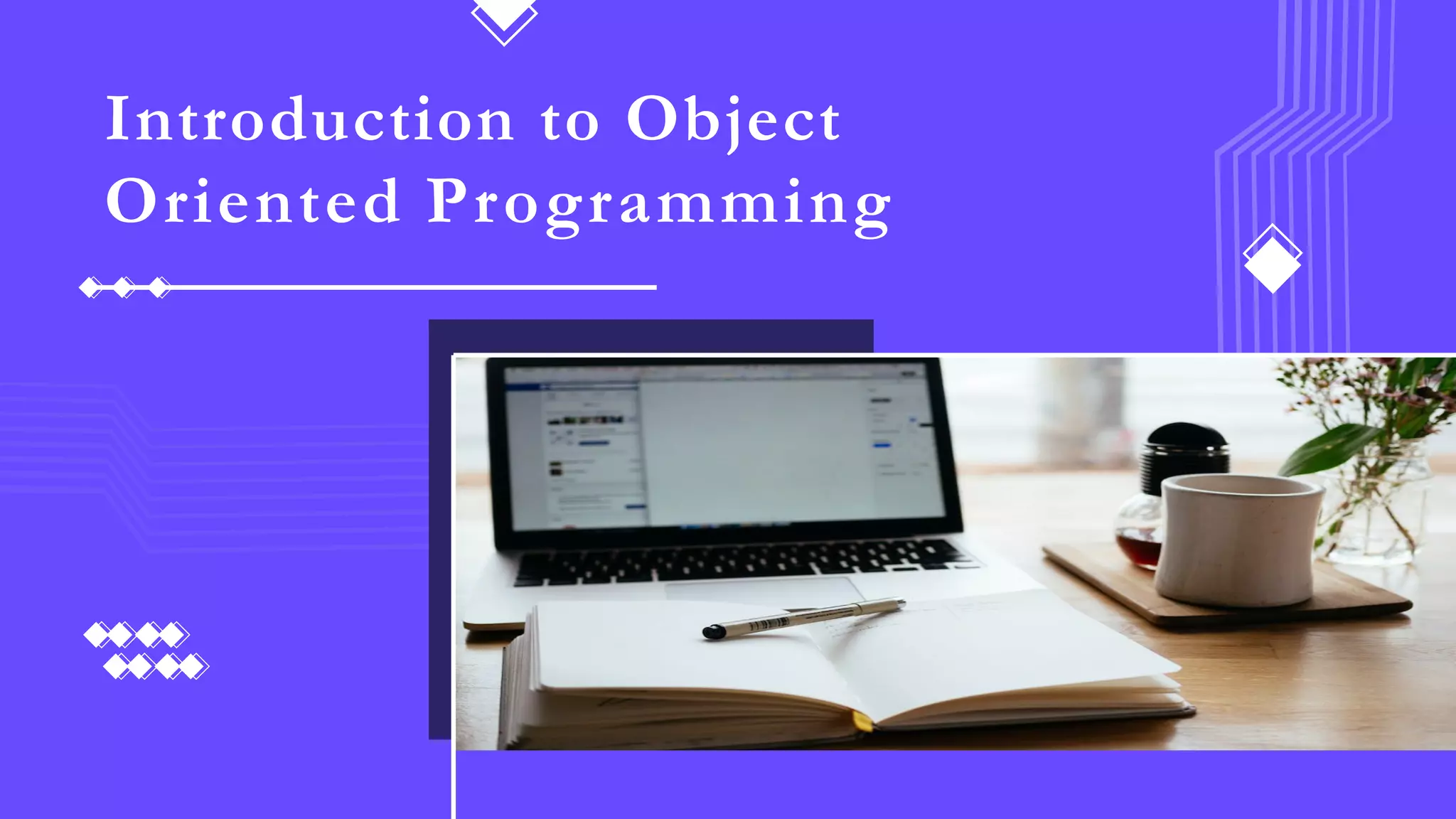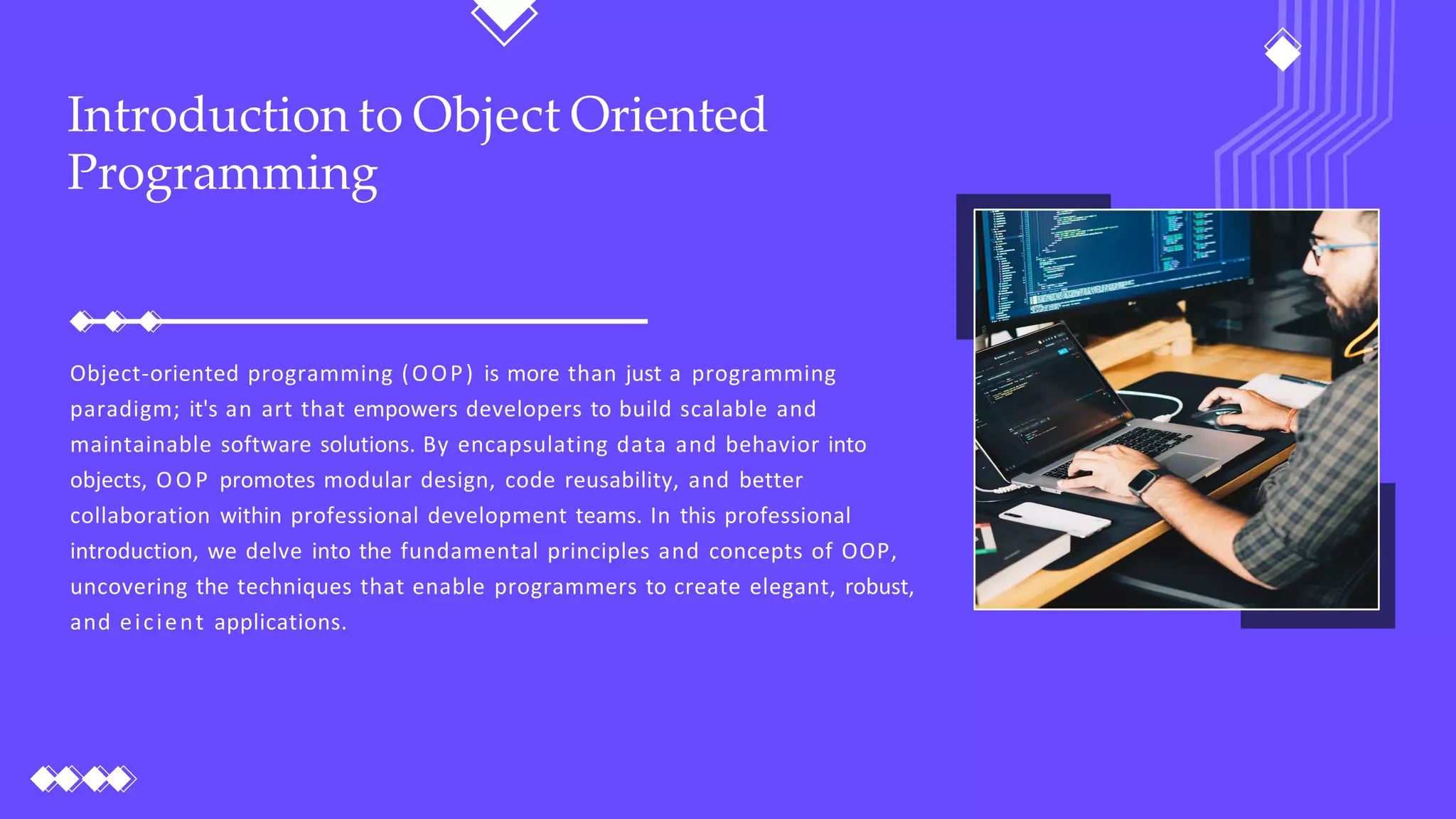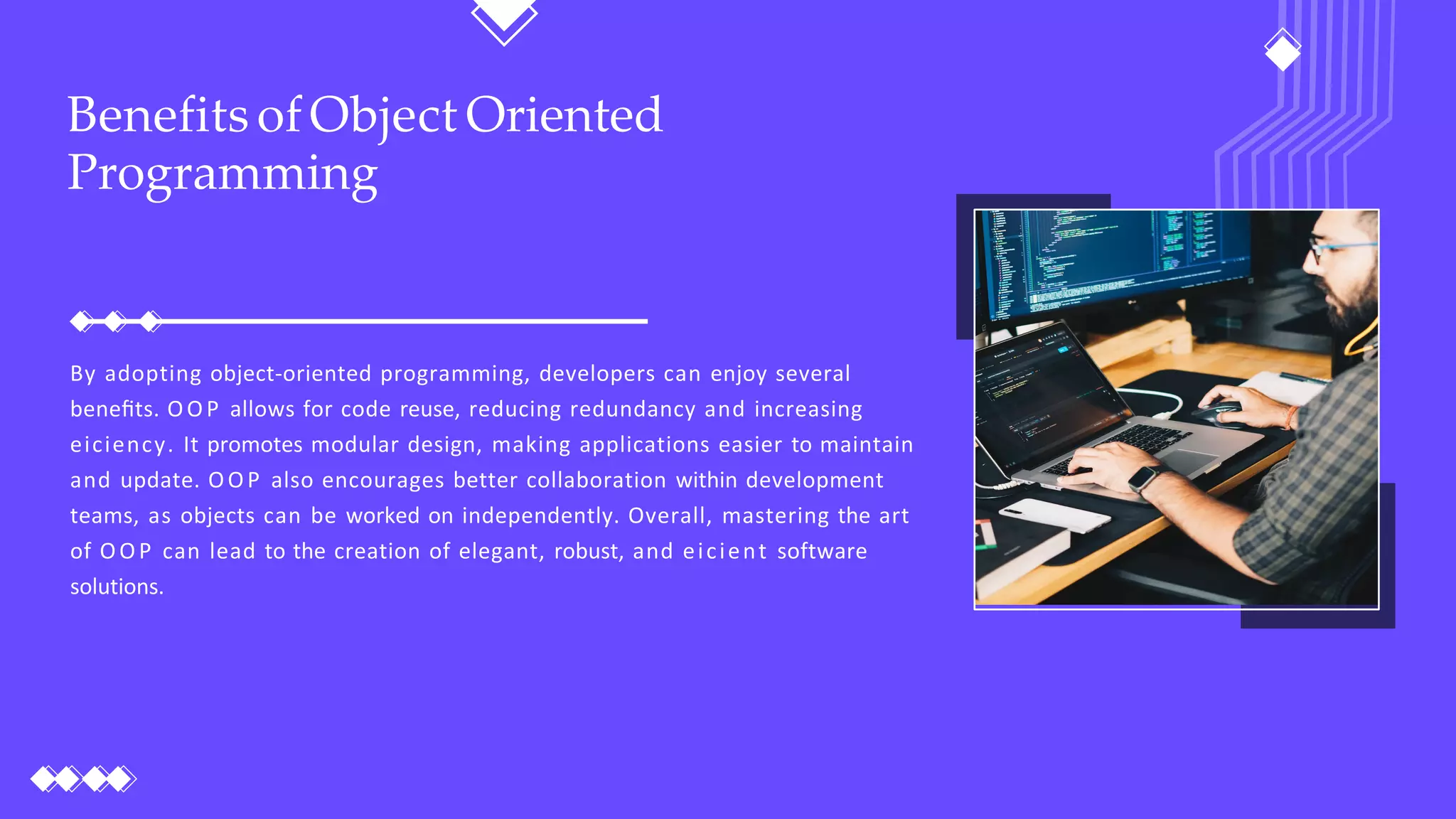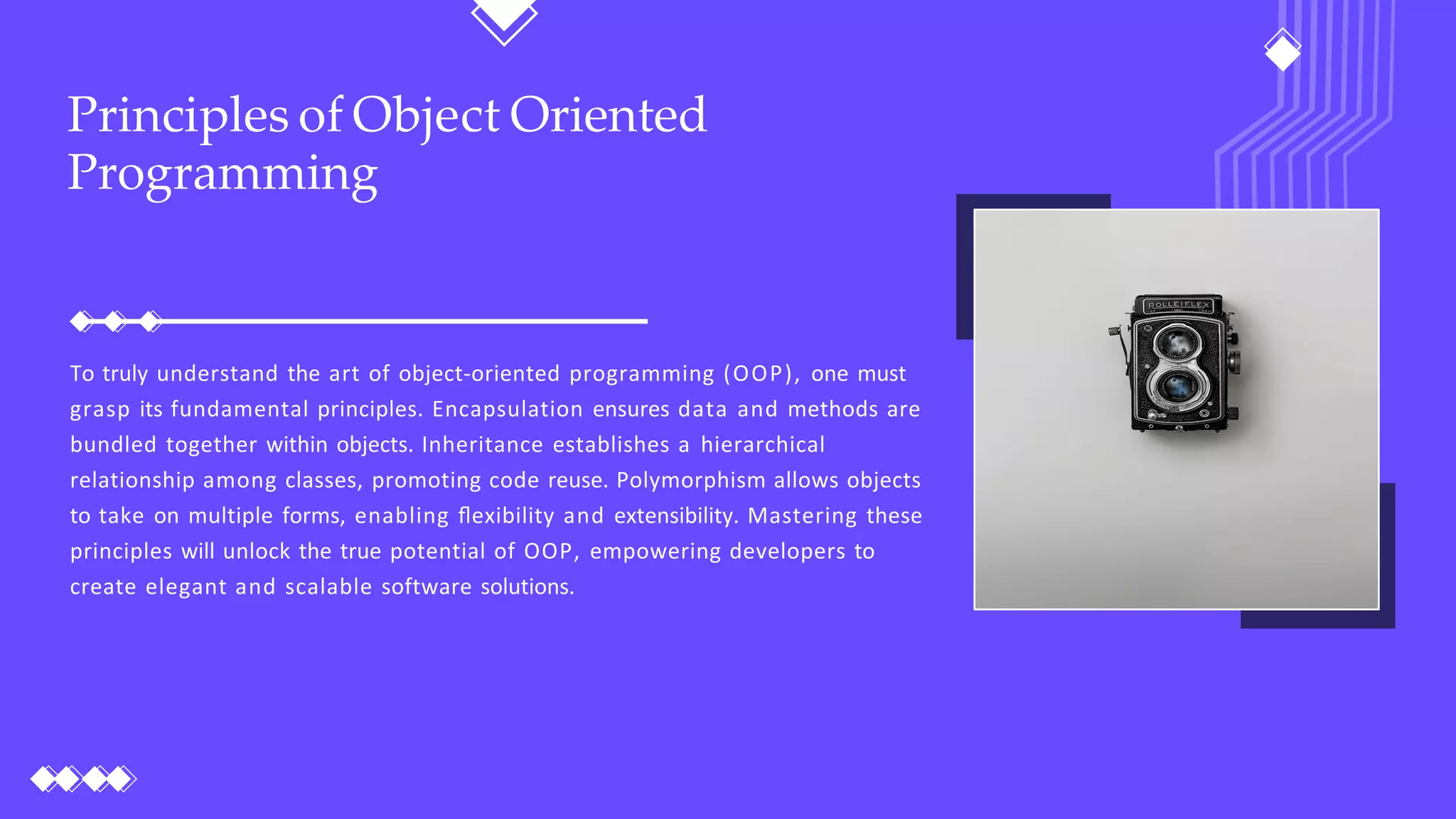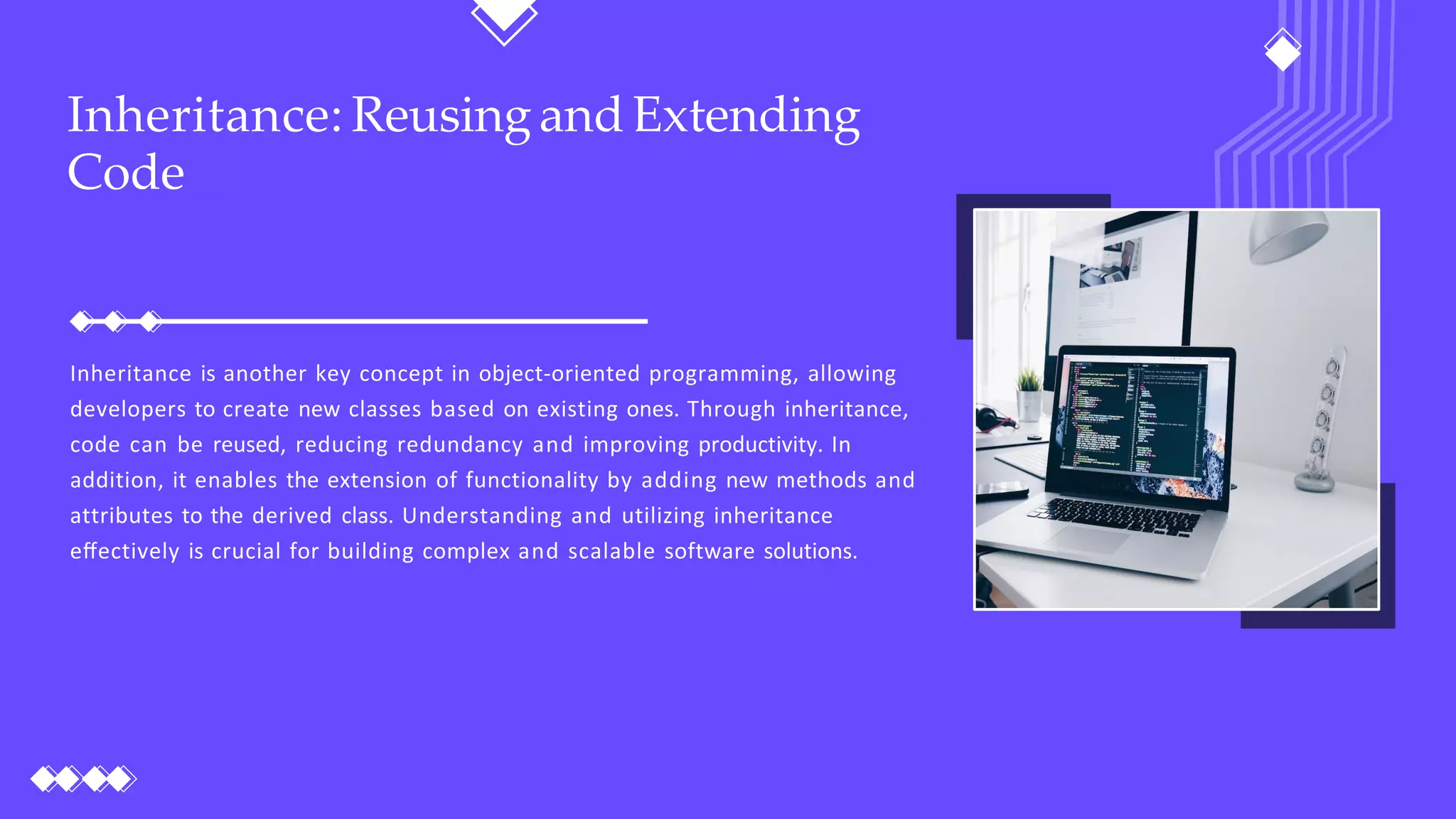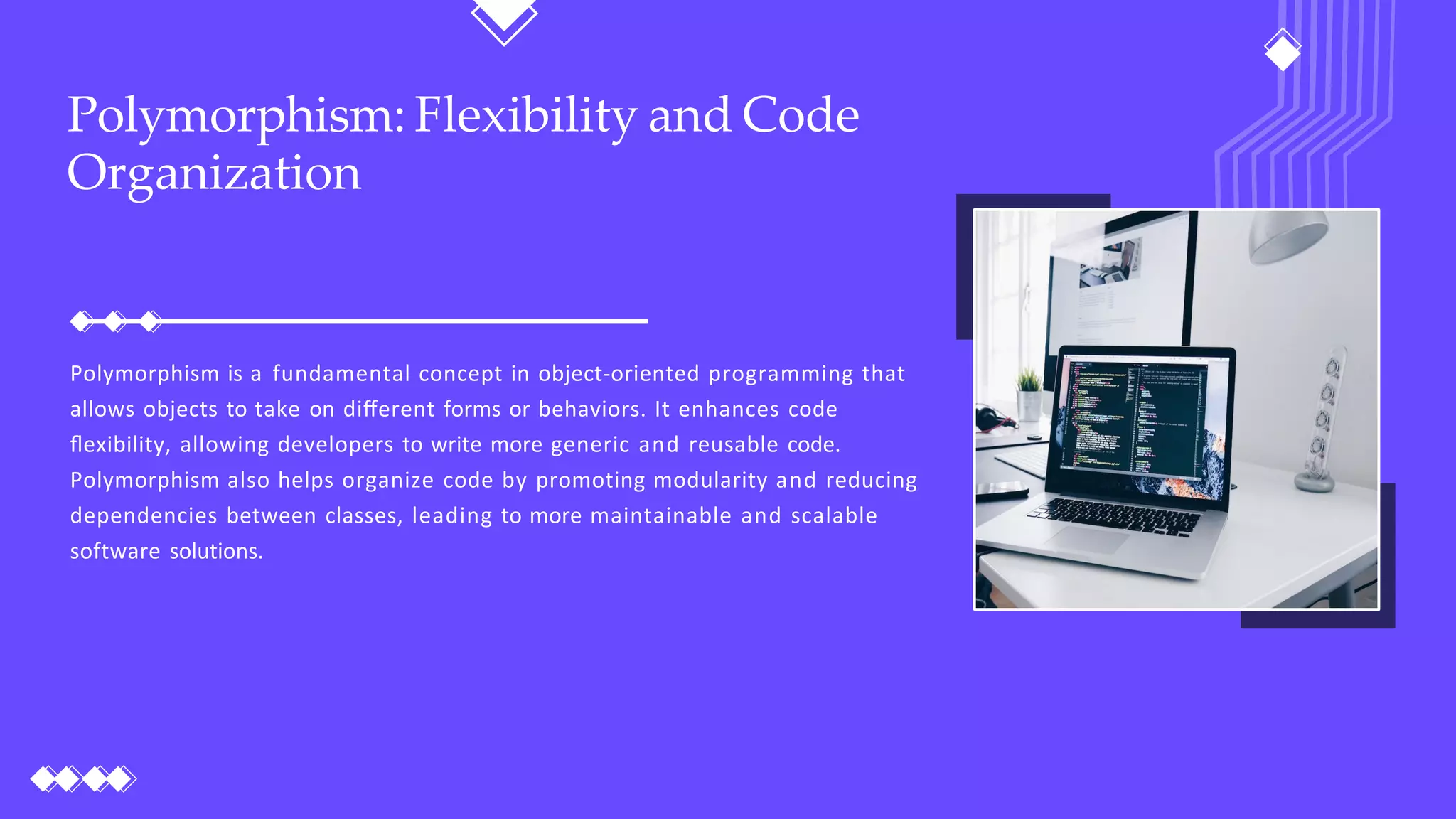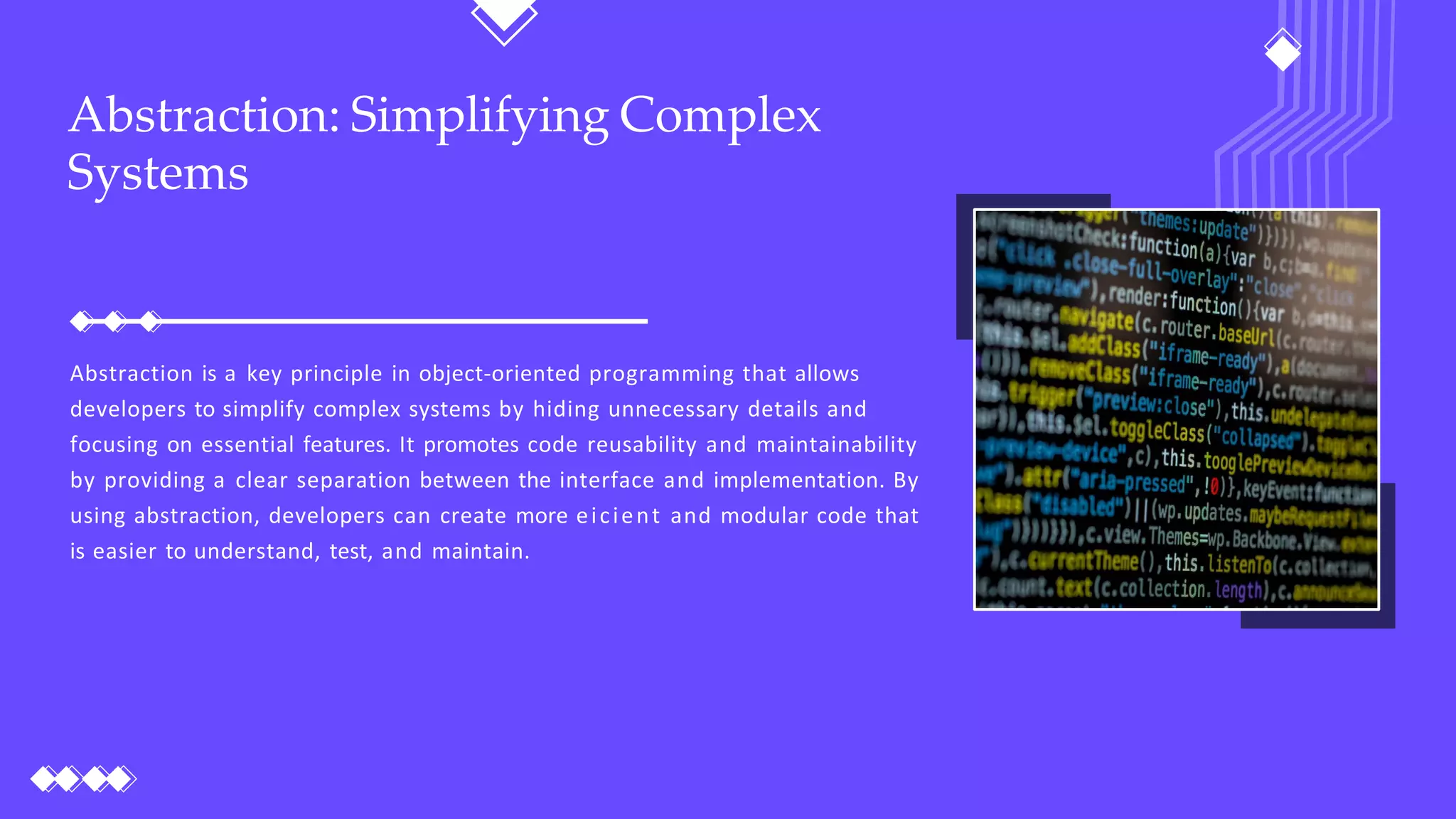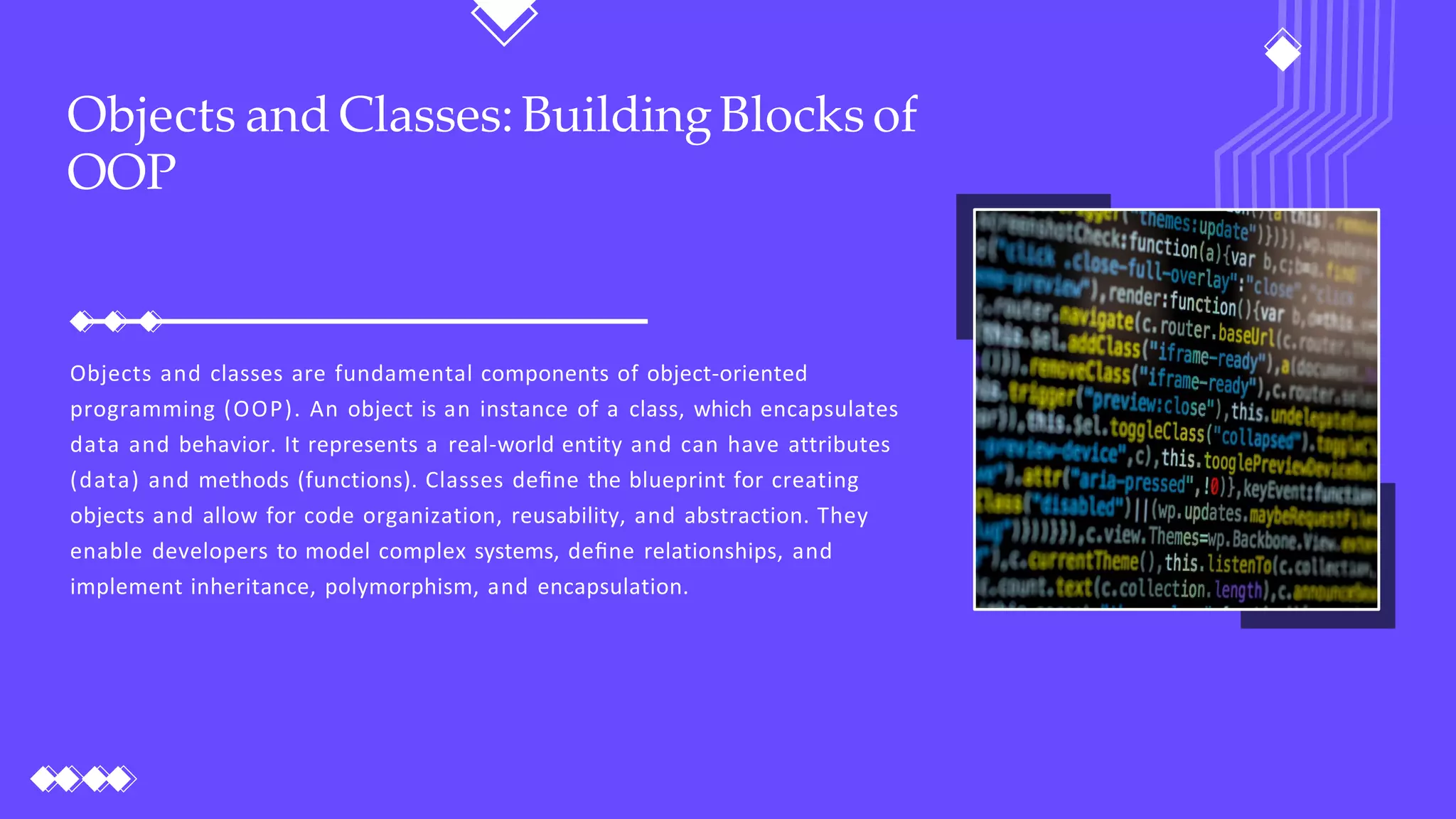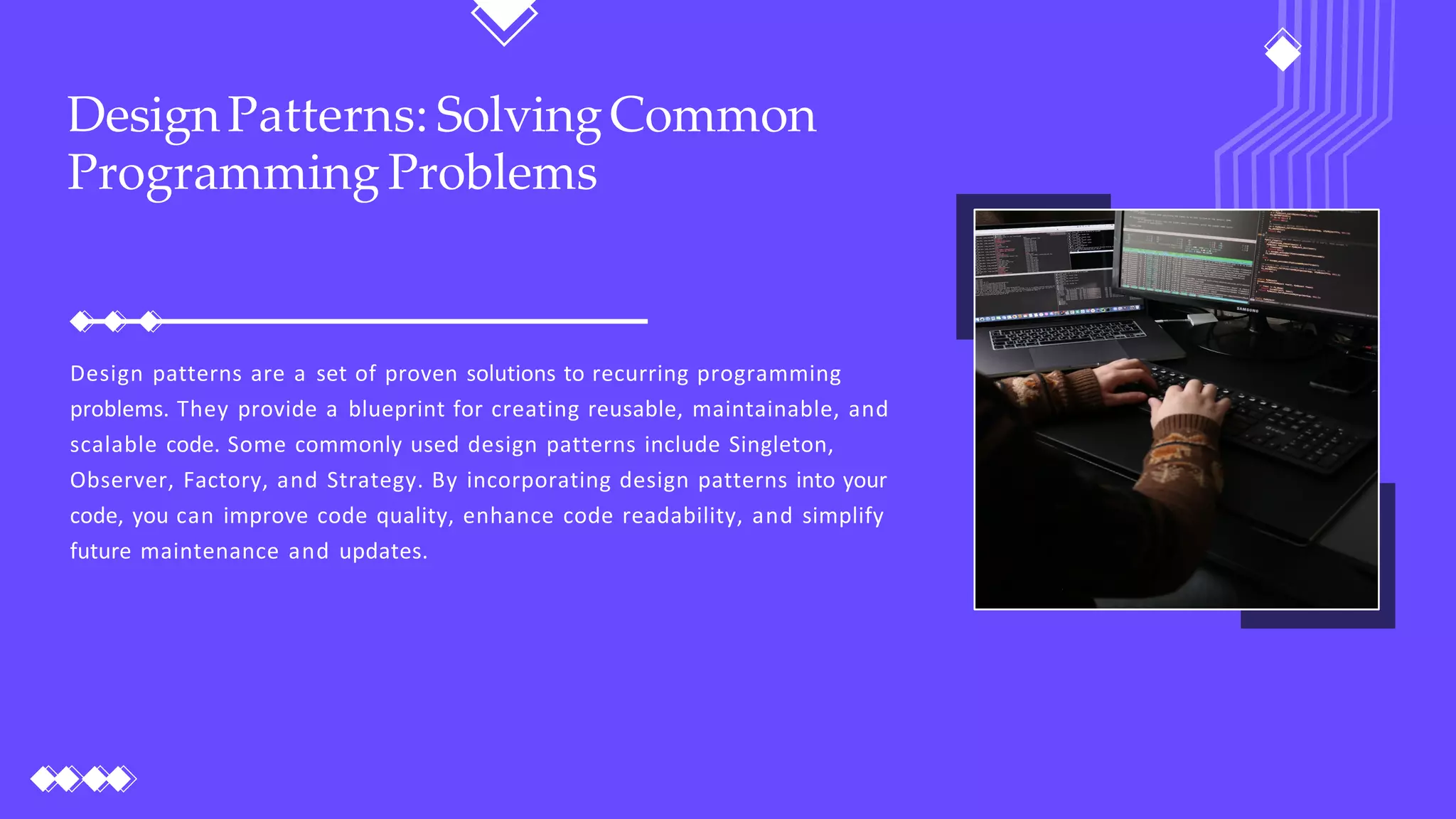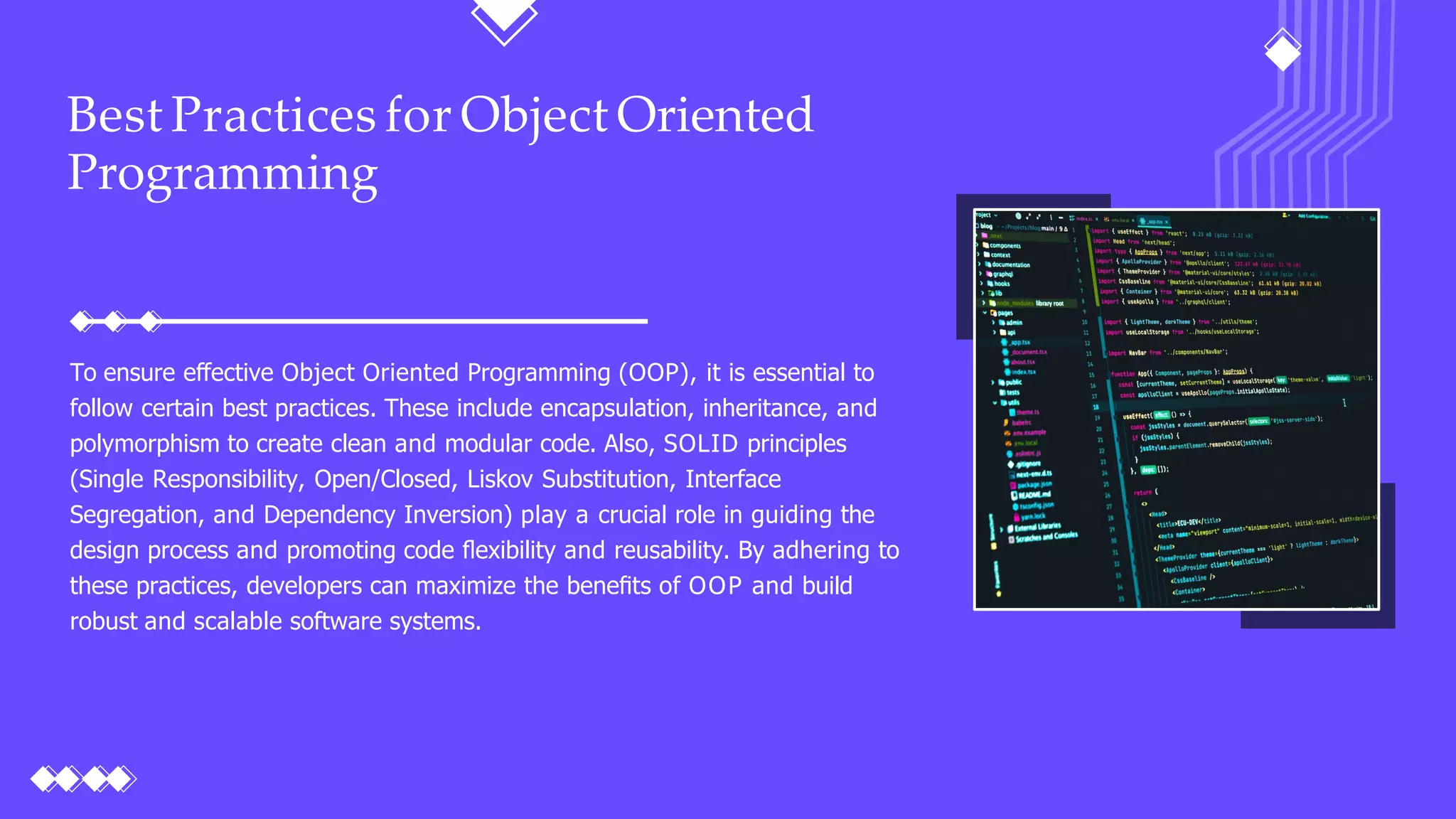This document provides an overview of object-oriented programming concepts including encapsulation, inheritance, polymorphism, abstraction, objects, classes, and design patterns. It discusses the benefits of OOP such as code reuse, modularity, and collaboration. Key principles like encapsulating data within objects, creating class hierarchies through inheritance, and enabling polymorphism are explained. Best practices for OOP including following SOLID principles are also covered.
